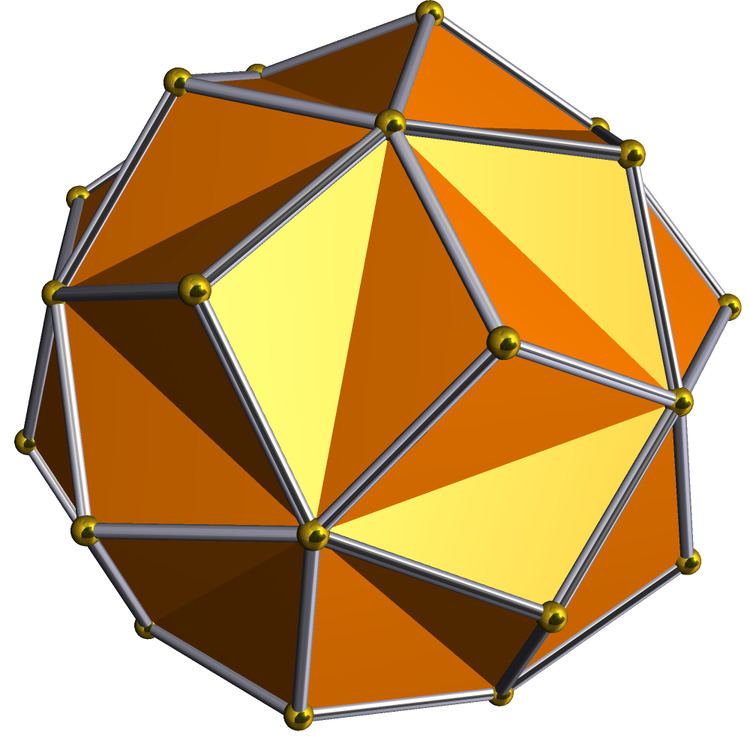 | ||
In geometry, the small triambic icosahedron is the dual to the uniform small ditrigonal icosidodecahedron. It is composed of 20 intersecting isogonal hexagon faces. It has 60 edges and 32 vertices, and Euler characteristic of −8. Its external surface also represents the B stellation of the icosahedron.
If the intersected hexagonal faces are divided and new edges created, this figure becomes the triakis icosahedron. The descriptive name triakis icosahedron represents a topological construction starting with an icosahedron and attaching tetrahedra to each face (not necessarily regular tetrahedra). With the proper height of each such tetrahedron above the triangular base, this figure becomes a Catalan solid by the same name and the dual of the truncated dodecahedron.
The nonconvex uniform polyhedra great stellated dodecahedron and great dodecahedron, as viewed as surface topologies, can also be constructed as icosahedron with pyramids, the first with much taller pyramids, and the second with inverted ones.
It is also a uniform dual, and is the dual of the small ditrigonal icosidodecahedron. Other uniform duals which are also stellations of the icosahedron are the medial triambic icosahedron and the great triambic icosahedron.
This figure is also the first stellation of the icosahedron, and given as Wenninger model index 26.
This stellation is a popular subject for construction in modular origami, often made of thirty Sonobe units.
